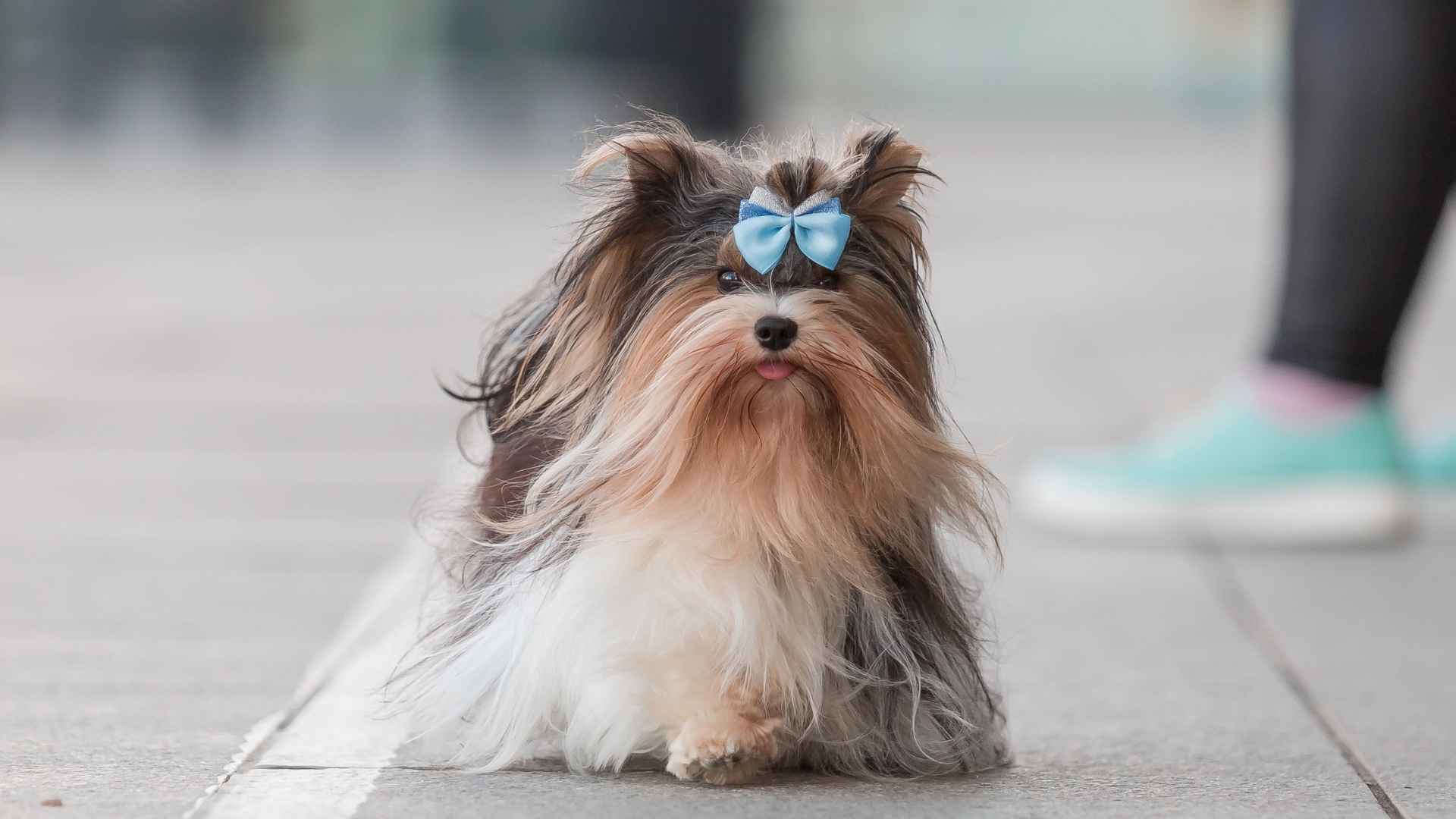Small dogs often surprise the world with their confidence. Behind compact frames and light steps are personalities that stride into every room as if they own it. These breeds carry a kind of boldness that outweighs their size—a spark of courage and self‑assurance that shows up in how they greet strangers, explore new spaces, and even hold their ground with much larger animals.
Their histories vary: some were bred for companionship in royal courts, others to hunt, guard, or herd, and those original roles still shape their temperament today. That past explains why so many of these little dogs are fearless, curious, and ready to take on challenges beyond their scale.
This article looks at seven small breeds whose attitudes stretch well past their physical limits. Each one shows how determination, loyalty, and spirited energy can live inside the tiniest of frames, turning them into unforgettable companions.
Little Dog Breeds With Boldness Bigger Than Their Bodies
1. Pomeranian
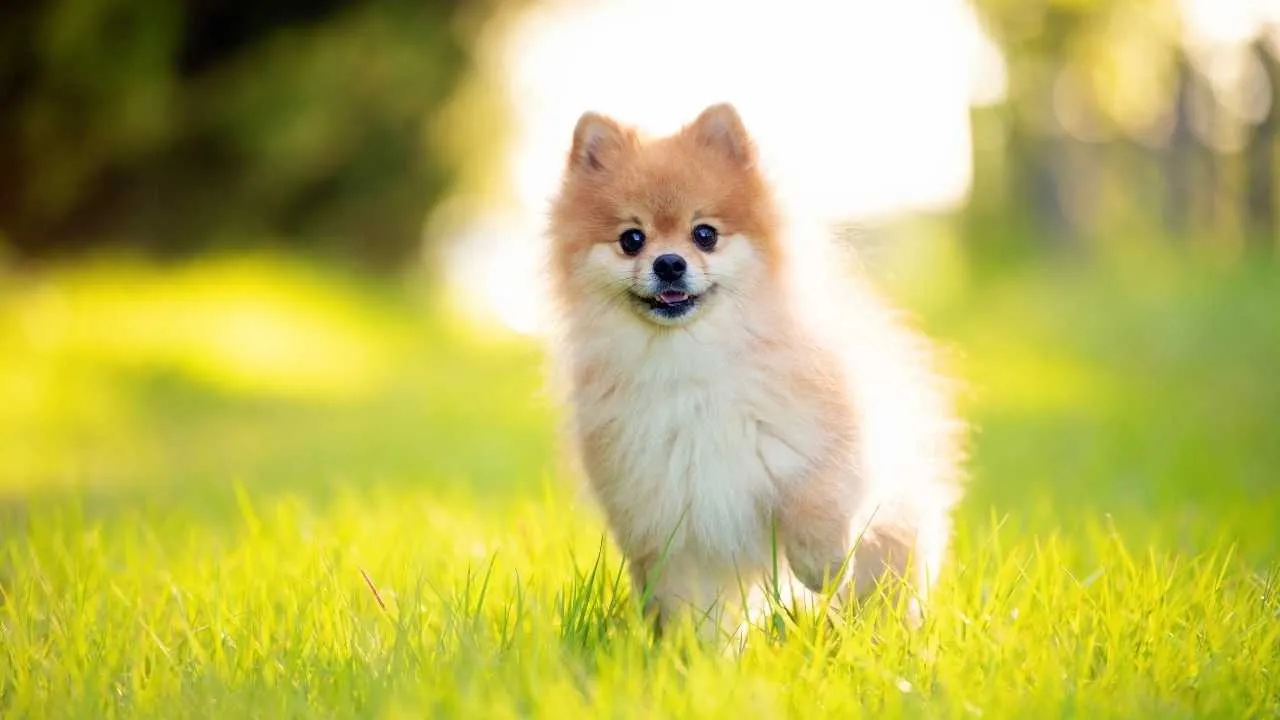
The Pomeranian’s history begins in the frigid Pomerania region of Europe, where it descended from larger sled dogs before becoming a royal favorite. Over time, breeding created the compact puffball we see today—tiny in stature, but still carrying the self‑confidence of its bigger ancestors. That heritage explains why so many Pomeranians act like they’re ten feet tall.
They are quick to alert, quick to investigate, and quick to claim every room they walk into. That bright personality can be channeled through early training, which works best with consistent praise and clear rules. Their size makes them easy to carry, but they rarely want to be treated like ornaments.
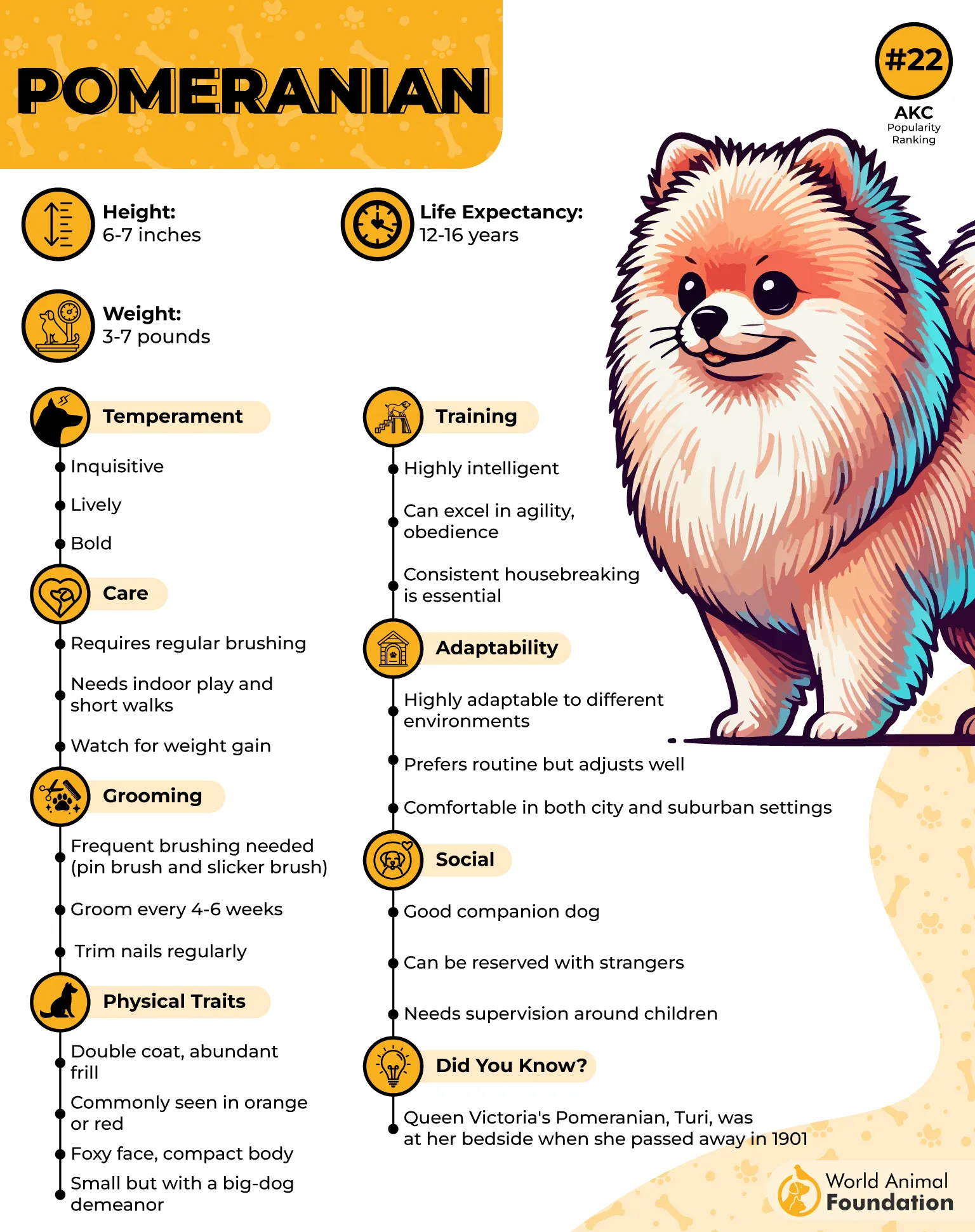
As per PetPlan, exercise is important, but a Pomeranian’s needs are modest—a few short walks and indoor play will keep them content. They don’t tire easily, though, and many will happily trot alongside their owners longer than expected. That determination is part of their charm.
Their thick, fluffy double coat is striking, but it needs regular brushing to stay free of tangles and matting. Grooming is a bonding ritual for many owners, giving the dog extra attention while maintaining that signature “lion’s mane.”
The Pomeranian’s voice is another big feature. They bark, they “talk,” they make their presence known—but it’s driven by alertness, not nervousness. Underneath all that volume is a dog that craves involvement in everything happening around them.
Fun Fact
Queen Victoria owned several Pomeranians and helped popularize the smaller variety we know today, influencing the breed’s modern look.
2. Yorkshire Terrier
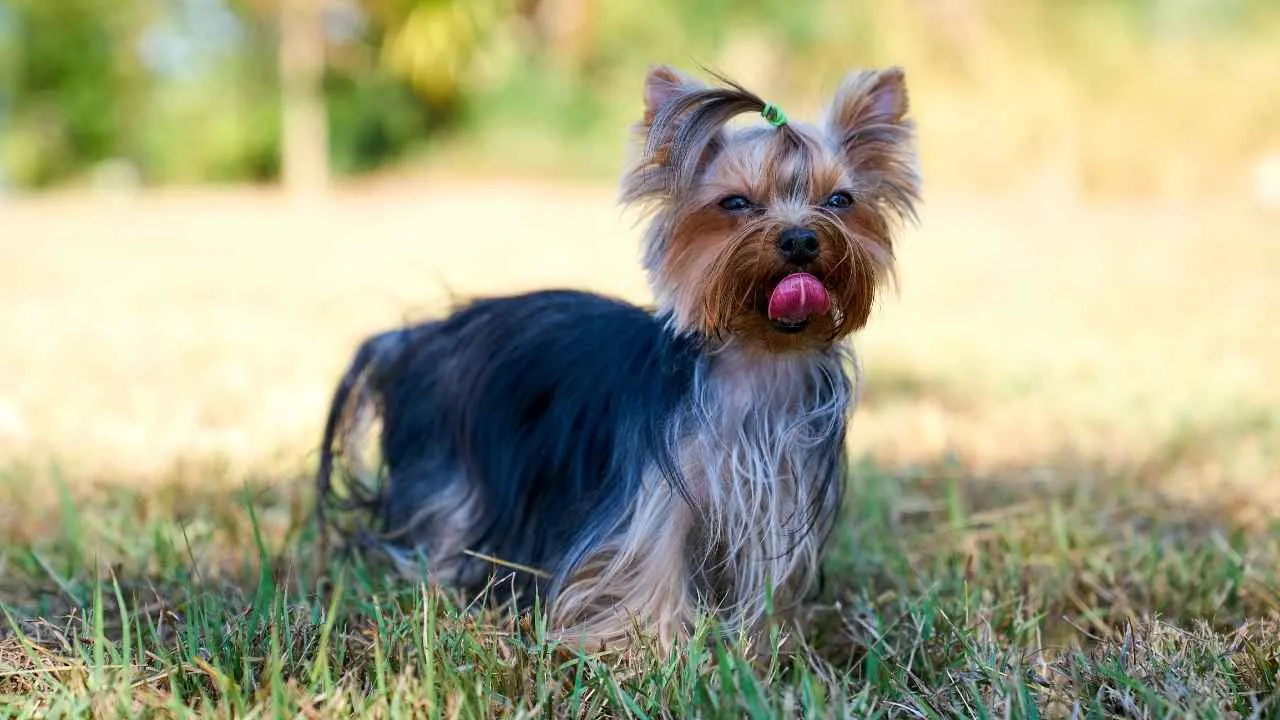
Yorkshire Terriers were bred in 19th‑century England to chase rats in textile mills, a gritty job that built their legendary tenacity. That working‑class history created a dog that’s both fearless and endlessly curious, despite weighing less than many housecats.
Yorkies walk with a kind of bounce that feels deliberate. They don’t hesitate to approach strangers, investigate odd sounds, or hold their ground with larger dogs. That boldness makes them memorable companions for anyone who likes a dog with personality.

Their silky coat is one of the breed’s hallmarks—it grows long and fine, more like human hair than typical dog fur. Keeping it beautiful requires daily brushing and occasional trims, but many owners enjoy the ritual and the results.
Training a Yorkshire Terrier is a balance of firmness and fun. They respond quickly to positive reinforcement but dislike being ignored or scolded harshly. Once they learn a skill, they’ll repeat it with pride.
They are small, but they’re rarely fragile in spirit. A Yorkie will defend their home with gusto, curl up on a lap with equal enthusiasm, and trot down the street as if leading the parade.
Fun Fact
During World War II, a Yorkshire Terrier named Smoky served as a war dog, running telegraph wires through pipes and lifting soldiers’ spirits on the front.
3. Chihuahua
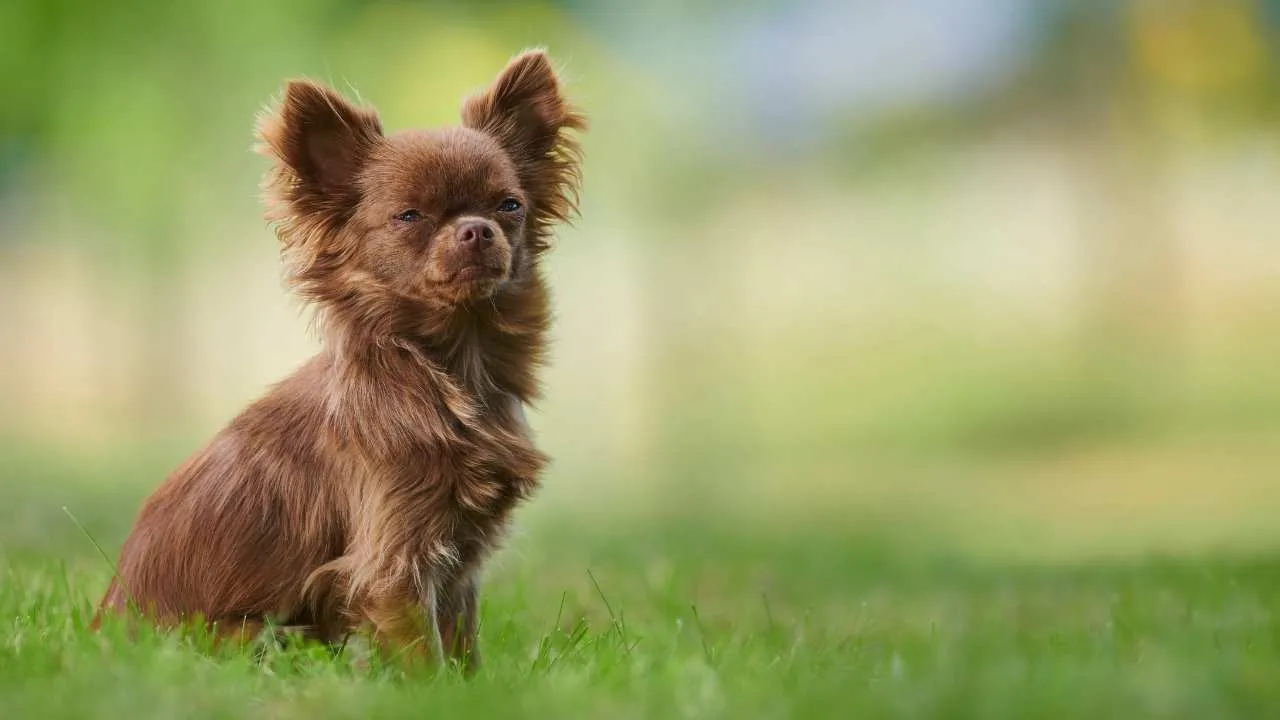
Chihuahuas are the smallest of all recognized dog breeds, but anyone who’s met one knows they carry an oversized sense of self. Their bold, sometimes brash personality is part of their appeal—they approach life like they have something to prove.
According to the AKC, they are often fiercely attached to their favorite person. That loyalty can make them protective, even territorial, but it also gives them a reputation as affectionate and entertaining companions.
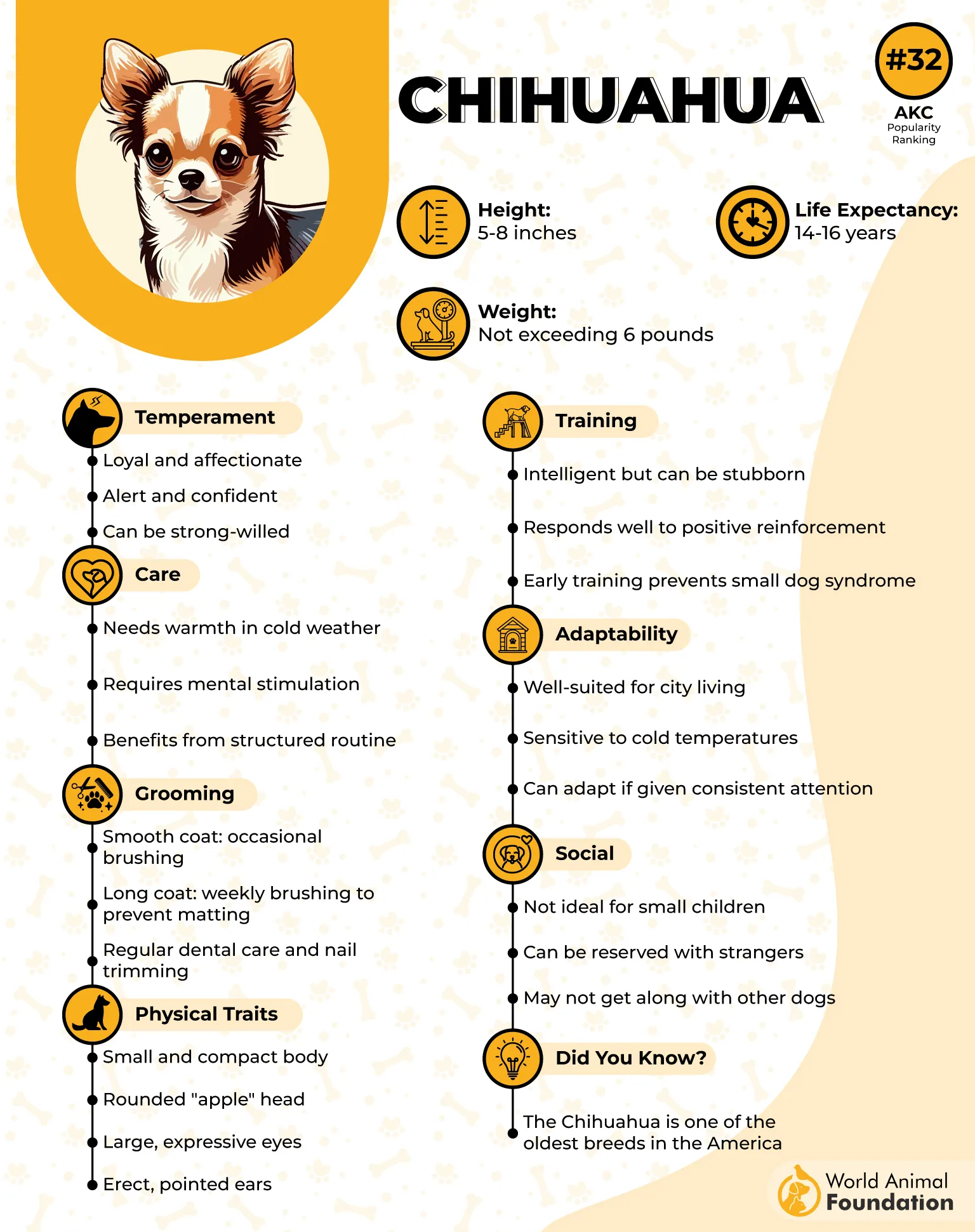
Chihuahuas don’t need miles of exercise, but they’re surprisingly sturdy on walks and hikes. They like to explore on their own terms, sometimes demanding to be carried, then wriggling to get down moments later.
Their coats come in two varieties—smooth and long‑haired—and care varies accordingly. The smooth coat needs only occasional brushing, while the long coat benefits from regular grooming to avoid tangles.
Their alertness makes them vocal watchdogs, quick to sound off when something feels “off.” That instinct comes from centuries of being kept as tiny guardians in homes and temples.
Fun Fact
Chihuahuas likely descend from the Techichi, a small companion dog of the Toltec civilization, making them one of the oldest companion breeds in the Americas.
4. Jack Russell Terrier
The Jack Russell Terrier may be small, but it’s built like a coiled spring. Bred in England for fox hunting, this terrier is fearless, energetic, and endlessly determined—a combination that makes them unforgettable to live with.
They love work, puzzles, and anything that challenges their quick minds. A Jack Russell without something to do will invent its own activities, often with hilarious or chaotic results.
Despite their size, they need real exercise—long walks, games of fetch, even agility training. Their stamina is surprising, and their enthusiasm rarely fades halfway through an outing.
Their coat can be smooth, broken, or rough, each with slightly different grooming needs, though all are easy to keep clean. Their hardy build means they can handle outdoor play in almost any condition.
Jack Russells are known for a kind of boldness that borders on audacity—they’ll chase, dig, leap, and explore without hesitation. That spirit is exactly what makes people fall in love with them.
Fun Fact
Jack Russells have starred in movies and TV shows for decades—most famously, Eddie from Frasier—because their intelligence and expressiveness make them natural performers.
5. Miniature Pinscher
The Miniature Pinscher, often nicknamed the “King of Toys,” doesn’t just walk—it struts. Originating in Germany, this breed developed from small terriers and hounds bred for hunting vermin, giving them an outsized sense of self‑importance. That history explains their fearless, almost regal demeanor.
Min Pins are endlessly curious, always ready to investigate a rustle, a knock, or a new person at the door. They thrive on engagement and enjoy games that let them think and move. A bored Min Pin will make its own entertainment, usually by turning the house into an obstacle course.
Training works best when owners set boundaries early. They are smart, but stubborn streaks can appear if they sense inconsistency. Their eagerness to learn is matched by an eagerness to challenge.
Their sleek, glossy coat is simple to maintain—just a quick brush now and then. This low‑maintenance grooming makes them easy companions for busy households.
Despite their small size, they have a commanding bark and presence. Visitors often assume they’re meeting a much bigger dog based on confidence alone.
Fun Fact
Miniature Pinschers aren’t miniature Dobermans—they predate the Doberman breed entirely, with their own distinct lineage.
6. Dachshund
Dachshunds were bred in Germany for a very specific job: burrowing into badger dens to flush out prey. That task required boldness, persistence, and an almost comical lack of hesitation. Their long, low bodies aren’t just cute—they’re purpose‑built tools for fearless work underground.
That history still shows in how they behave today. Dachshunds approach new smells and sounds with determined curiosity, often digging or poking their noses into anything that catches their interest.
They bond strongly with their families and like to “supervise” household activity. Loyalty is a major trait, but so is their independent streak—they were bred to work without constant direction, and it shows.
PetMD states that their coats come in smooth, long, or wire varieties, each with different care needs. The smooth coat is low‑maintenance, while the long and wire coats require regular brushing to stay neat.
Small as they are, Dachshunds aren’t delicate in spirit. They’ll stand up to bigger dogs, chase after wildlife, and even try to herd people with surprising determination.
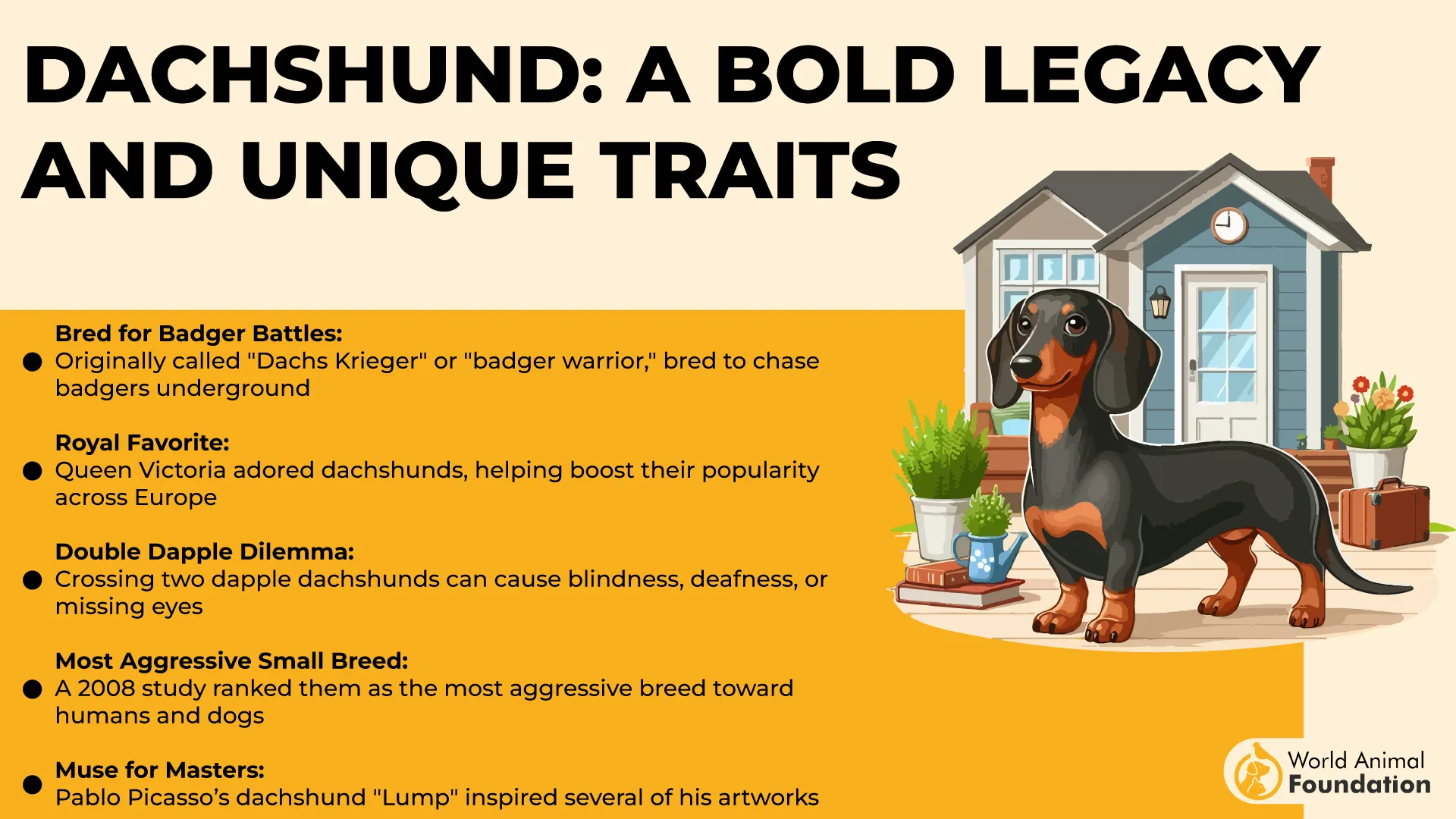
Fun Fact
Dachshunds are the only breed designed specifically to hunt badgers—their name literally translates to “badger dog” in German.
7. Brussels Griffon
The Brussels Griffon is as expressive as it is bold—its face alone tells entire stories. Originating in Belgium, this little dog was once a stablehand’s companion, catching rats and keeping workers company, before charming its way into royal laps. That mix of worker grit and aristocratic flair shaped a distinct personality.
They have big, searching eyes and an eagerness to connect with their humans. Many Griffons are “velcro dogs,” sticking close, following from room to room, always ready to join the action.
Despite their size, they carry an air of confidence that borders on dramatic flair. They are aware of their charm and use it well, often climbing into laps uninvited or demanding attention with an intense stare.
Their coat can be smooth or rough, the latter giving them their signature “monkey‑like” face. Both types need brushing, but the rough coat benefits from occasional trimming to prevent tangles.
The Brussels Griffon may be small, but its bravery is outsized. They’ll defend their people, face new situations with curiosity, and insist on being part of every adventure.
Fun Fact
A Brussels Griffon starred alongside Jack Nicholson in the film As Good As It Gets, bringing the breed a burst of Hollywood fame.
Conclusion
Small dog breeds carry stories of purpose and history. Many were originally bred for work far bigger than their tiny paws suggest, whether to hunt rats, guard homes, or serve as companions in royal courts. Those beginnings left them with an unmistakable fearless nature and a confident attitude that shows every day.
These tiny dogs may share space with much larger dogs, but they rarely behave like underdogs. Their spirited nature and big attitude mean they step up to challenges that might intimidate larger breeds. For owners, that boldness adds character, surprise, and a daily reminder that size doesn’t define courage.
Their blend of mental stimulation needs and light physical exercise makes them adaptable family pets. They’re intelligent dogs who thrive on learning, playing, and connecting. With an expressive face, bright eyes, and an eagerness to interact, they are truly great companions.
Whether you’re drawn to a Griffon’s expressive eyes, a Yorkie’s bold stride, or a Dachshund’s determination, these little pups bring more than fluff—they bring a fearless attitude that fills every room they enter.


